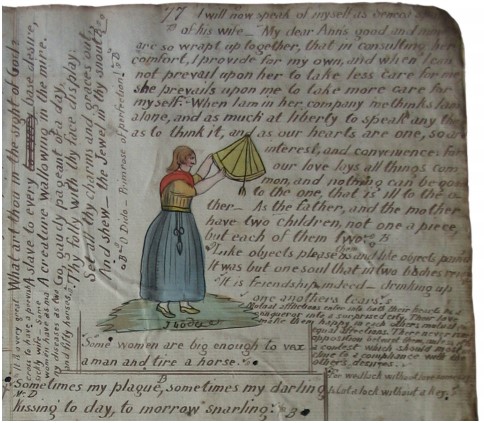KINDRED LINES: Army discharge records
Published in Features, Issue 5 (September/October 2020), Volume 28By Fiona Fitzsimons
The Royal Hospitals of Chelsea and Kilmainham were founded in the seventeenth century to provide accommodation for old soldiers ‘broken by age or war’, but the greater number of pensions issued by the Royal Hospitals were not to veterans ‘living in’ but to ‘out-pensioners’ living in their own homes.
The UK National Archives has discharge records for soldiers awarded an out-pension, for the years 1783–1822 for Kilmainham and 1760–1887 for Chelsea. The discharge records are a subset of the British Army service records. Soldiers were eligible for a pension if they were disabled in the line of duty or after twelve years of service. We find evidence in the discharge records of ‘old soldiers’ still only in their late twenties. Until 1838 the armed services were able to defer paying out pensions to these young veterans. Most soldiers were born in the United Kingdom (Ireland included), but we also see a significant number from distant parts of the Empire, including India and the Caribbean.

Above: ‘Some women are big enough to vex a man and tire a horse’—from the private journal of Roger Lamb (1756–1830), an Irish soldier who fought in the American War of Independence. (John Coughlin)
These discharge records contain good evidence for family history research. The information varies but will include some or all of the following: biographical information (name, date and place of birth, age, occupation, name and address of next of kin, marital status, children’s names and dates of birth); appearance (height and chest size, complexion, hair and eye colour, distinguishing marks, including scars and, after 1820, tattoos); service history (date of attestation, regiment, service number, rank (including a record of any promotions), where stationed, campaigns fought in, medals given, date of discharge and the reason, medical history, conduct and character observations). As a rule of thumb, earlier records are less structured, with less evidence.
We can use pension records to reconstruct people’s stories in their own words. Roger Lamb (1756–1830), former sergeant in the Royal Welsh Fusiliers, wrote to request a pension. He had enlisted in 1773, aged seventeen, and served twelve years in the 9th and 23rd Regiments of Foot, including ‘eight years … in America [in the Revolutionary War] … during which time, he was in six pitched battles, four sieges, several important expeditions, and was twice taken prisoner and as often made his escape’. Lamb describes specific battles in hair-raising detail, including the Battle of Camden in South Carolina, where he ‘had the honour of carrying the regimental colours, and immediately after … was appointed temporary surgeon to the Regiment’. In 1785 he was discharged, aged 29, but was ‘at that time too young to receive a pension’. In 1809, ‘being now far advanced in life and having a wife and six children’, he wrote to the War Office at Chelsea.
The men documented in these records are from every part of Ireland. After 1793 the Militia Act lifted the ban on Catholics in the armed services, and thereafter we find men of all faiths, including Catholics. We don’t have a complete a run of records for Kilmainham, but what does survive provides insights into conflicts like the 1798 Rebellion.
Records are published on-line at www.ancestry.com and www.findmypast.com.
Fiona Fitzsimons is director of Ennaclan, a Trinity campus company, and of findmypast Ireland.
















